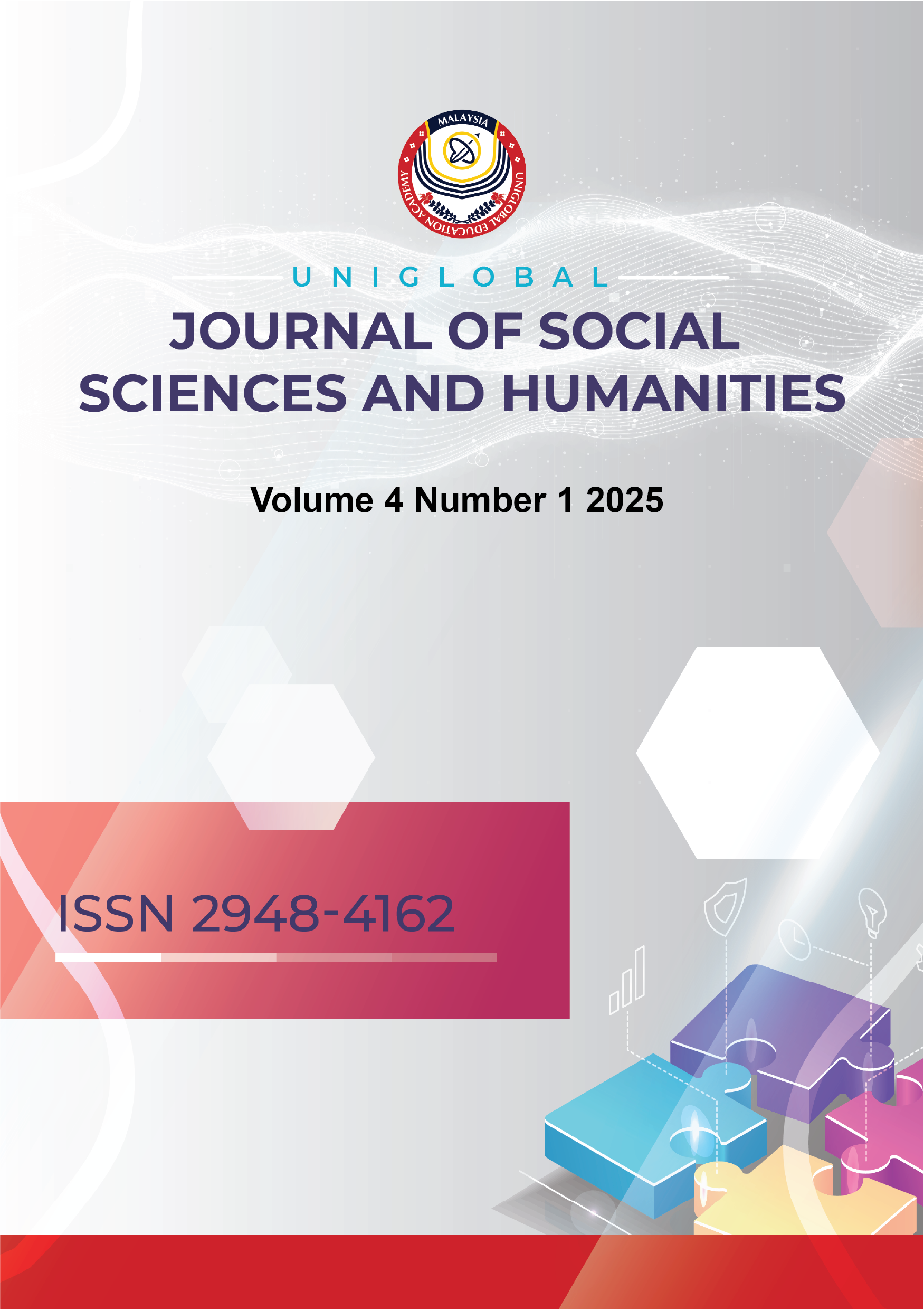Examining the Impact of Transformational Leadership and Team Collaboration on Team Innovation within Software Companies in Shenzhen City
DOI:
https://doi.org/10.53797/ujssh.v4i1.2.2025Keywords:
Transformational leadership, team collaboration, team innovation, software companies, Shenzhen cityAbstract
In the fast-paced and competitive landscape of Shenzhen's software industry, innovation is vital for sustaining growth and maintaining a competitive edge. This study aims to examine the influence of transformational leadership and team collaboration on enhancing team innovation within software companies in Shenzhen. A quantitative research approach was employed, using survey data collected from 400 employees across various software firms, and analyzed through Structural Equation Modeling (SEM). The findings reveal that transformational leadership has a significant positive impact on team innovation, both directly and indirectly through team collaboration. Additionally, team collaboration was found to be a key driver of innovation, highlighting its central role in facilitating the sharing of diverse ideas and joint problem-solving. The study contributes to the literature by providing empirical insights from China's tech industry, demonstrating the critical importance of leadership and collaborative team dynamics in fostering innovation. These findings offer valuable guidance for industry practitioners seeking to boost innovative performance through effective leadership practices and team collaboration strategies.
References
AlTaweel, I. R., & Al-Hawary, S. I. (2021). The mediating role of innovation capability on the relationship between strategic agility and organizational performance. Sustainability, 13(14), 7564. https://doi.org/10.3390/su13147564
Cha, J., Kim, Y., Lee, J. Y., & Bachrach, D. G. (2015). Transformational leadership and inter-team collaboration: Exploring the mediating role of teamwork quality and moderating role of team size. Group & Organization Management, 40(6), 715-743.
Cromwell, J. R., & Gardner, H. K. (2020). High-stakes innovation: When collaboration in teams enhances (or undermines) innovation in professional service firms. Journal of Professions and Organization, 7(1), 2-26.
Du, J. (2020). The Shenzhen experiment: The story of China’s instant city. Harvard University Press.
Eisenbeiss, S. A., Van Knippenberg, D., & Boerner, S. (2008). Transformational leadership and team innovation: integrating team climate principles. Journal of applied psychology, 93(6), 1438.
Gaspersz, E. J. (2024). Influence of Transformational Leadership and Teacher Collaboration on Teachers’ Ability in Implementing Interdisciplinary Learning. Academy of Education Journal, 15(1), 718-733.
Gressgård, L. J. (2011). Virtual team collaboration and innovation in organizations. Team Performance Management: An International Journal, 17(1/2), 102-119.
Gui, L., Lei, H., & Le, P. B. (2024). Fostering product and process innovation through transformational leadership and knowledge management capability: the moderating role of innovation culture. European Journal of Innovation Management, 27(1), 214-232.
Hui, Z., Khan, N. A., & Akhtar, M. (2024). AI-based virtual assistant and transformational leadership in social cognitive theory perspective: a study of team innovation in construction industry. International Journal of Managing Projects in Business.
Khan, I. U., Amin, R. U., & Saif, N. (2022). Individualized consideration and idealized influence of transformational leadership: Mediating role of inspirational motivation and intellectual stimulation. International Journal of Leadership in Education, 1-11.
Klaic, A., Burtscher, M. J., & Jonas, K. (2020). Fostering team innovation and learning by means of team‐centric transformational leadership: The role of teamwork quality. Journal of Occupational and Organizational Psychology, 93(4), 942-966.
Porath, U. (2023). Advancing managerial evolution and resource management in contemporary business landscapes. Modern Economy, 14(10), 1404-1420.
Sheehan, M., Garavan, T. N., & Morley, M. J. (2020). Transformational leadership and work unit innovation: A dyadic two-wave investigation. Journal of Business Research, 109, 399-412.
Sidhu, K. B. (2024). Potential of shared leadership on innovation effectiveness in enterprises: A qualitative exploration from leaders and team members (Doctoral dissertation, FH Vorarlberg (Fachhochschule Vorarlberg)).
Su, Z. X., Wang, Z., & Chen, S. (2020). The impact of CEO transformational leadership on organizational voluntary turnover and employee innovative behaviour: the mediating role of collaborative HRM. Asia Pacific Journal of Human Resources, 58(2), 197-219.
Sutisna, A., Khoriah, A., & Norman, E. (2024). Transformational Leadership and Team Synergy in Improving Communication and Collaboration in Educational Settings. MES Management Journal, 3(3), 657-667.
Van der Voet, J., & Steijn, B. (2021). Team innovation through collaboration: How visionary leadership spurs innovation via team cohesion. Public Management Review, 23(9), 1275-1294.
Wang, C., & Hu, Q. (2020). Knowledge sharing in supply chain networks: Effects of collaborative innovation activities and capability on innovation performance. Technovation, 94, 102010.
Wen, H., Zhong, Q., & Lee, C. C. (2022). Digitalization, competition strategy and corporate innovation: Evidence from Chinese manufacturing listed companies. International Review of Financial Analysis, 82, 102166.
Zou, M., Liu, P., Wu, X., Zhou, W., Jin, Y., & Xu, M. (2023). Cognitive Characteristics of an Innovation Team and Collaborative Innovation Performance: The Mediating Role of Cooperative Behavior and the Moderating Role of Team Innovation Efficacy. Sustainability, 15(14), 10951.
Downloads
Published
How to Cite
Issue
Section
License
Copyright (c) 2025 Zhiqiang Huang, Nor Saidi Mohamed Nasir

This work is licensed under a Creative Commons Attribution-NonCommercial-ShareAlike 4.0 International License.



